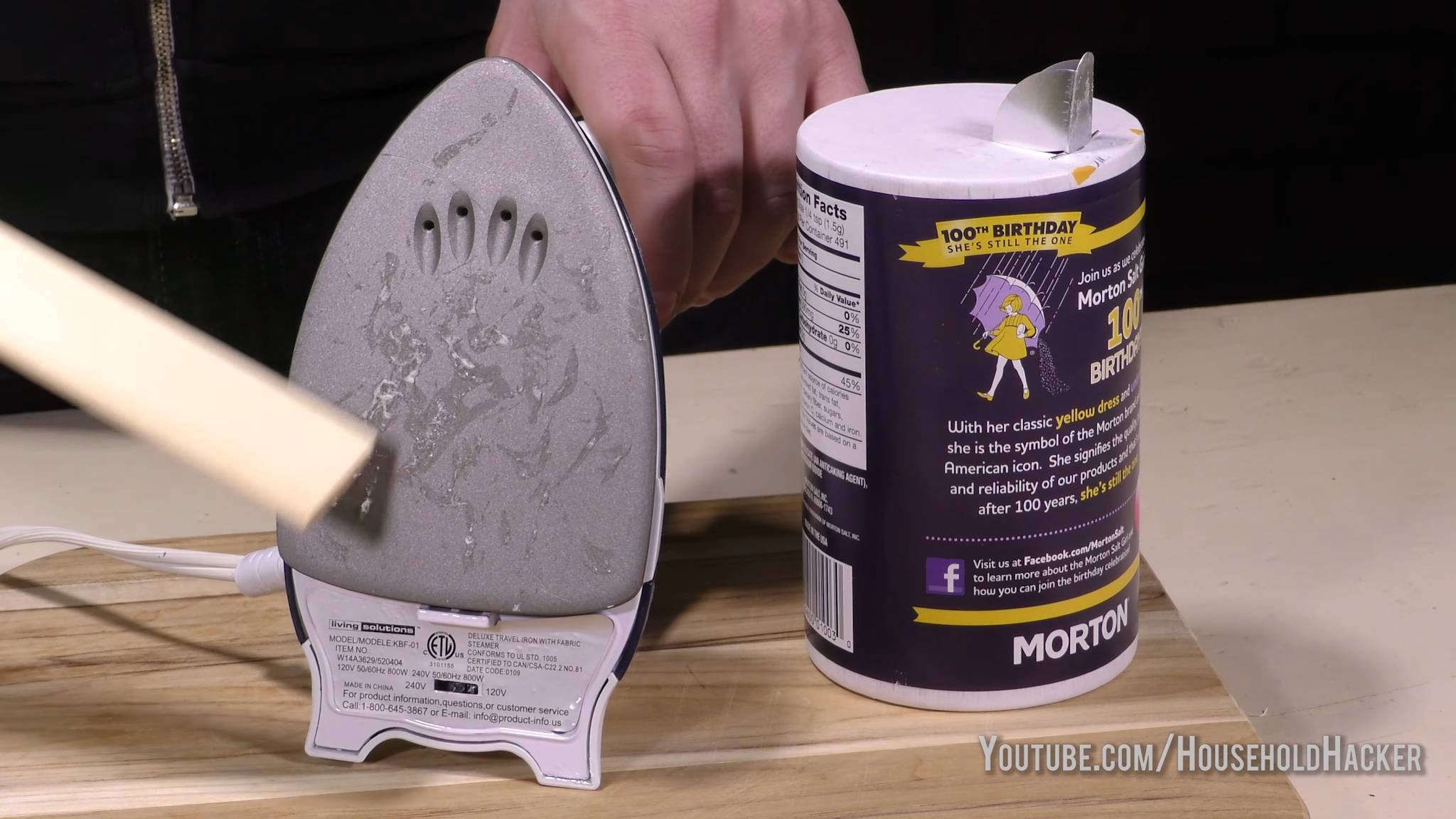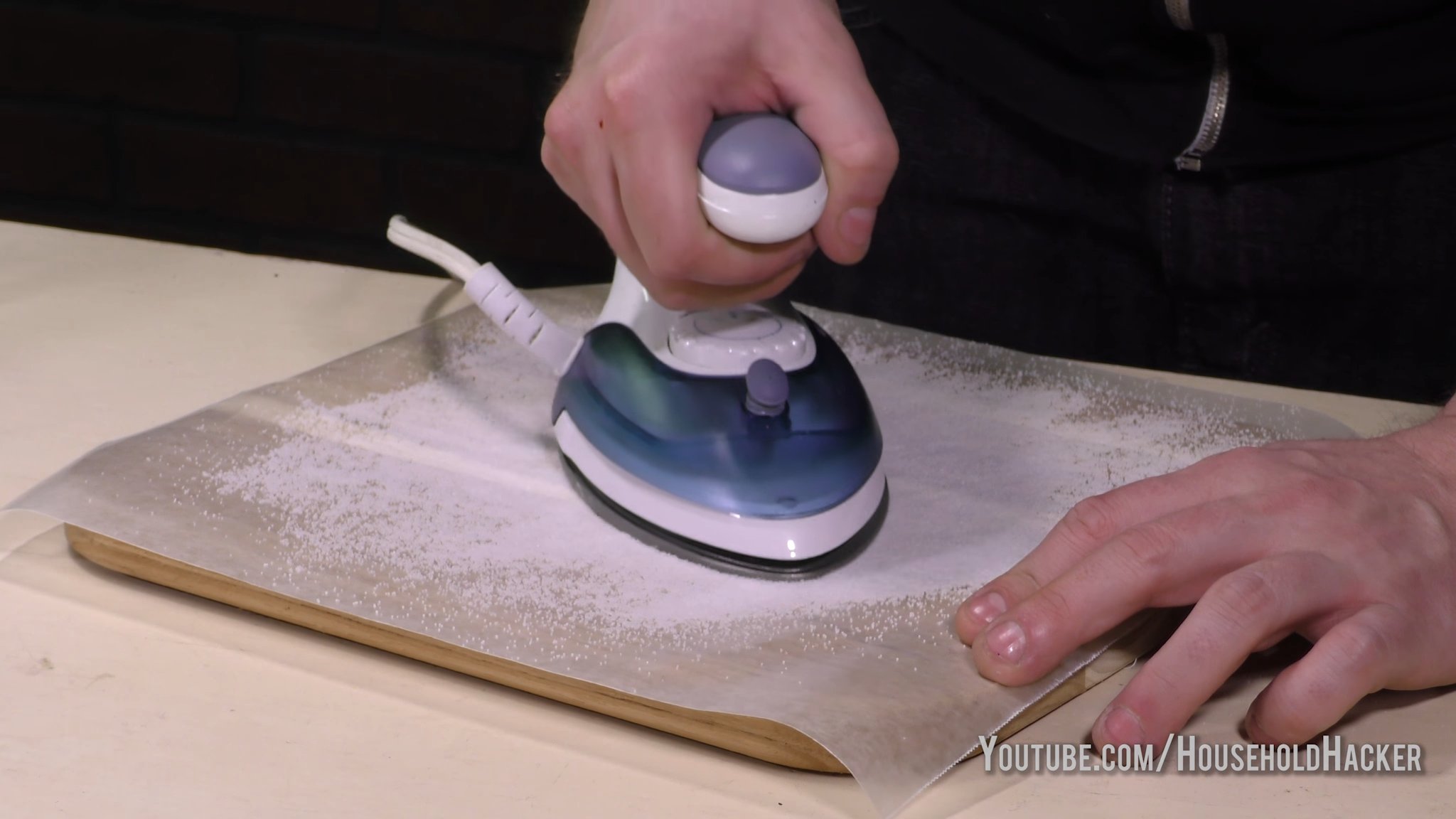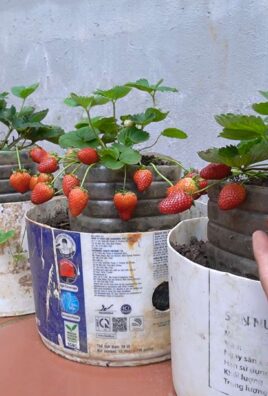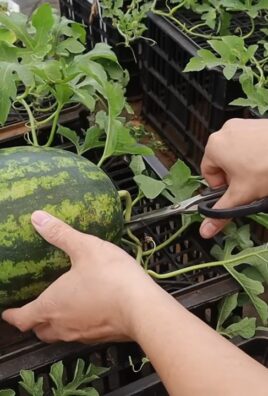Grow Microgreens at Home – ever dreamt of having a tiny, vibrant, and incredibly nutritious garden right on your kitchen counter? I know I have! Forget those sprawling acres; we’re talking about miniature powerhouses packed with flavor and vitamins, ready to elevate your meals in just a matter of days. This isn’t just a trend; it’s a revolution in home gardening, and I’m so excited to share my favorite DIY tricks with you.
The practice of sprouting seeds and enjoying young greens has roots stretching back centuries, with evidence suggesting that the Chinese were cultivating sprouts as early as 5,000 years ago! Today, the appeal is clear: convenience, sustainability, and incredible health benefits. But let’s be honest, sometimes getting started can feel a little daunting. That’s where these simple, effective DIY hacks come in.
Life gets busy, and fresh, healthy food can sometimes feel out of reach. That’s why learning how to grow microgreens at home is a game-changer. Imagine adding a burst of peppery radish microgreens to your salad, or a sprinkle of delicate sunflower shoots to your sandwich – all grown by you, with minimal effort and maximum impact. This article is your ultimate guide to unlocking the secrets of successful microgreen cultivation, transforming your kitchen into a thriving, edible oasis. Let’s get growing!

Grow Your Own Delicious Microgreens: A Beginner’s Guide
Hey there, fellow food enthusiasts! Are you ready to embark on a super rewarding and surprisingly easy journey into the world of microgreens? I’m telling you, growing these tiny powerhouses at home is a game-changer. Not only do they pack a nutritional punch, but they also add a vibrant burst of flavor and color to just about any dish. Plus, it’s incredibly satisfying to watch them sprout and thrive under your care. So, ditch those expensive grocery store containers and let’s get growing!
What are Microgreens Anyway?
Before we dive in, let’s clarify what we’re talking about. Microgreens are basically baby vegetable greens, harvested just after the cotyledon leaves (the first leaves to emerge from the seed) have developed, and sometimes after the first true leaves appear. They’re smaller than baby greens but larger than sprouts, and they’re bursting with flavor and nutrients. Think of them as concentrated versions of their mature counterparts.
Why Grow Microgreens at Home?
Honestly, the reasons are endless!
* Freshness: You can’t beat the freshness of harvesting your microgreens just minutes before you eat them.
* Nutrition: Microgreens are incredibly nutrient-dense, often containing higher levels of vitamins and minerals than their mature counterparts.
* Flavor: They offer a wide range of flavors, from spicy radish to sweet sunflower.
* Cost-Effective: Growing your own is significantly cheaper than buying them from the store.
* Convenience: You’ll have a constant supply of fresh greens right at your fingertips.
* It’s Fun!: Seriously, it’s a really enjoyable and rewarding hobby.
Choosing Your Seeds
The first step is selecting the right seeds. Not all seeds are created equal when it comes to microgreens. You’ll want to choose seeds specifically intended for sprouting or microgreen production. Avoid seeds that have been treated with fungicides or other chemicals.
Here are some popular and easy-to-grow microgreen varieties:
* Radish: Spicy and quick to grow.
* Broccoli: Mild and nutritious.
* Sunflower: Nutty and crunchy.
* Pea Shoots: Sweet and tender.
* Mustard: Pungent and flavorful.
* Arugula: Peppery and delicious.
* Kale: Earthy and nutritious.
* Cress: Tangy and fast-growing.
You can find microgreen seeds at most garden centers or online retailers. I usually buy organic seeds to ensure I’m getting the best quality.
Gathering Your Supplies
Okay, let’s get our hands dirty! Here’s what you’ll need to get started:
* Seeds: As mentioned above, choose your favorite varieties.
* Growing Trays: You’ll need two trays – one with drainage holes and one without. The tray without holes will act as a water reservoir. I usually use standard 10×20 inch trays.
* Growing Medium: You can use a variety of mediums, including potting mix, coconut coir, or even hemp mats. I prefer coconut coir because it’s sustainable and holds moisture well.
* Spray Bottle: For misting your seeds and seedlings.
* Water: Filtered water is best.
* Weight (Optional): A small weight, like a book or brick, to help with germination.
* Light Source: A sunny windowsill or a grow light.
Step-by-Step Guide to Growing Microgreens
Alright, let’s get down to the nitty-gritty! Here’s a detailed guide to growing your own microgreens at home:
1. Soaking the Seeds (Optional but Recommended)
Some seeds benefit from soaking before planting. This helps to soften the seed coat and speed up germination. Radish, broccoli, and sunflower seeds are good candidates for soaking.
* How to Soak: Place your seeds in a jar or bowl and cover them with water. Let them soak for 4-8 hours. Drain the water before planting.
2. Preparing the Growing Trays
This is a crucial step for creating the perfect environment for your microgreens.
1. Sanitize the Trays: Before you start, wash your growing trays with soap and water to prevent any mold or bacteria growth.
2. Add Growing Medium: Fill the tray with drainage holes with your chosen growing medium. Moisten the medium thoroughly with water. You want it to be damp but not soggy. Gently press down on the medium to create a level surface. I usually aim for about 1-2 inches of medium.
3. Sowing the Seeds
Now for the fun part!
1. Spread the Seeds: Sprinkle the seeds evenly over the surface of the growing medium. Don’t overcrowd them, as this can lead to mold growth. The seed density will vary depending on the type of seed. For smaller seeds like broccoli, you can sow them more densely than larger seeds like sunflower.
2. Gently Press: Gently press the seeds into the growing medium to ensure good contact.
3. Mist with Water: Use your spray bottle to mist the seeds with water. You want to keep them moist but not waterlogged.
4. Blackout Period (Important for Germination)
This is where the magic happens! The blackout period helps to encourage uniform germination and strong stem growth.
1. Cover the Seeds: Place the second tray (the one without drainage holes) on top of the seeded tray. This will block out the light.
2. Add Weight (Optional): Place a small weight on top of the tray to help the seeds make good contact with the growing medium. This is especially helpful for larger seeds like sunflower and pea shoots.
3. Maintain Moisture: Check the moisture level of the growing medium daily. If it feels dry, mist it lightly with water.
4. Timeframe: The length of the blackout period will vary depending on the type of seed. Generally, it lasts for 2-4 days. You’ll know it’s time to remove the cover when the seeds have germinated and the seedlings are starting to push up against the top tray.
5. Introducing Light
Once the seeds have germinated, it’s time to introduce light.
1. Remove the Cover: Carefully remove the top tray and the weight (if you used one).
2. Provide Light: Place the tray in a sunny windowsill or under a grow light. If using a grow light, position it a few inches above the seedlings.
3. Rotate the Tray: If using a windowsill, rotate the tray daily to ensure that the seedlings receive even light exposure. This will prevent them from leaning towards the light source.
6. Watering and Maintenance
Consistent watering is key to healthy microgreens.
1. Bottom Watering: This is the best way to water microgreens because it prevents the leaves from getting wet, which can lead to mold growth. Pour water into the bottom tray (the one without drainage holes). The growing medium will absorb the water from the bottom.
2. Watering Frequency: Water as needed, usually every 1-2 days. The growing medium should be consistently moist but not soggy.
3. Air Circulation: Ensure good air circulation around the microgreens to prevent mold growth. You can use a small fan to gently circulate the air.
7. Harvesting Your Microgreens
The moment you’ve been waiting for!
1. Harvest Time: Your microgreens are ready to harvest when they have developed their cotyledon leaves and sometimes their first true leaves. This usually takes 7-14 days, depending on the variety.
2. Harvesting Technique: Use sharp scissors or a knife to cut the microgreens just above the growing medium.
3. Washing (Optional): Gently wash the microgreens in cool water before using them.
4. Storage: Store the harvested microgreens in a sealed container in the refrigerator. They will typically last for up to a week.
Troubleshooting Common Problems
Even with the best intentions, you might encounter a few challenges along the way. Here are some common problems and how to fix them:
* Mold Growth: This is usually caused by overcrowding, poor air circulation, or overwatering. To prevent mold, make sure to sow your seeds thinly, provide good air circulation, and avoid overwatering. If you see mold, remove the affected area immediately. You can also try spraying the microgreens with a diluted hydrogen peroxide solution (1 part hydrogen peroxide to 10 parts water).
* Leggy Seedlings: This means that the seedlings are stretching towards the light source. This is usually caused by insufficient light. Make sure your microgreens are getting enough light, either from a sunny windowsill or a grow light.
* Slow Germination: This can be caused by several factors, including cold temperatures, dry

Conclusion
So, there you have it! Growing microgreens at home is not only surprisingly simple, but it’s also an incredibly rewarding experience. Forget those expensive, pre-packaged containers from the grocery store. With just a few basic supplies and a little bit of patience, you can cultivate a vibrant, nutrient-packed garden right on your windowsill.
Why is this DIY trick a must-try? Because it puts you in control. You know exactly what’s going into your food – no pesticides, no hidden additives, just pure, fresh goodness. Plus, the flavor of homegrown microgreens is unparalleled. They burst with intense, concentrated flavors that will elevate your salads, sandwiches, soups, and just about any dish you can imagine. Think of the possibilities! A sprinkle of spicy radish microgreens on your avocado toast, a handful of delicate pea shoots in your stir-fry, or a vibrant garnish of sunflower microgreens on your grilled salmon. The culinary applications are endless.
Beyond the flavor and freshness, growing your own microgreens is also a fantastic way to boost your health. These tiny powerhouses are packed with vitamins, minerals, and antioxidants, often containing significantly higher concentrations than their mature counterparts. It’s a simple and delicious way to add a nutritional punch to your daily diet.
Ready to get started?
Don’t be afraid to experiment! Try different varieties of seeds to discover your favorite flavors. Radish, broccoli, sunflower, pea shoots, and mustard are all excellent choices for beginners. You can also play around with different growing mediums. While soil is a classic option, you can also use coco coir, hemp mats, or even paper towels. Each medium will offer slightly different results, so have fun exploring what works best for you.
Consider variations like using a tiered system to grow multiple varieties at once, or setting up a small hydroponic system for even faster growth. You could even involve your kids in the process – it’s a great way to teach them about gardening, healthy eating, and the wonders of nature.
We are confident that once you experience the joy of harvesting your own fresh, flavorful microgreens, you’ll be hooked. It’s a simple, sustainable, and incredibly satisfying way to bring a little bit of nature into your home and nourish your body from the inside out.
So, what are you waiting for? Grab some seeds, gather your supplies, and get growing! We encourage you to try this DIY trick and share your experience with us. Let us know what varieties you’re growing, what challenges you encounter, and what delicious dishes you’re creating with your homegrown microgreens. Share your photos and tips in the comments below – we can’t wait to see what you come up with! Let’s all learn and grow together! This is the best way to grow microgreens at home.
Frequently Asked Questions (FAQ)
What exactly are microgreens?
Microgreens are essentially baby vegetable plants that are harvested shortly after germination, typically when they have developed their first set of true leaves. They are larger than sprouts but smaller than baby greens, and they are packed with flavor and nutrients. Think of them as a concentrated version of the mature vegetable.
What kind of seeds can I use to grow microgreens?
The possibilities are vast! Some popular choices include:
* **Brassicas:** Broccoli, kale, cabbage, radish, mustard
* **Legumes:** Peas, lentils, chickpeas
* **Cereals:** Wheatgrass, barley, oats
* **Amaranthaceae:** Amaranth, quinoa
* **Asteraceae:** Sunflower, lettuce, endive
* **Apiaceae:** Carrot, celery, dill, fennel
However, it’s crucial to use seeds specifically intended for sprouting or microgreen production. Avoid using seeds that have been treated with fungicides or other chemicals, as these are not safe for consumption. Look for seeds labeled as “organic” or “untreated” to ensure you’re growing healthy and safe microgreens.
How much light do microgreens need?
Microgreens need adequate light to thrive. While they can germinate in the dark, they require light once they sprout to develop their vibrant color and flavor. Indirect sunlight is often sufficient, especially if you’re growing them near a bright window. However, if you don’t have access to enough natural light, you can use a grow light. LED grow lights are an energy-efficient option and can provide the necessary spectrum of light for optimal growth. Aim for about 12-16 hours of light per day.
How often should I water my microgreens?
Maintaining consistent moisture is key to successful microgreen cultivation. The growing medium should be consistently damp, but not waterlogged. Overwatering can lead to mold growth, while underwatering can cause the microgreens to dry out and wilt. A good rule of thumb is to water your microgreens once or twice a day, depending on the humidity and temperature of your environment. Use a spray bottle to gently mist the surface of the growing medium, ensuring that it is evenly moistened.
How long does it take for microgreens to grow?
The growth time for microgreens varies depending on the variety. Some varieties, like radish and mustard, can be ready to harvest in as little as 7-10 days. Others, like sunflower and pea shoots, may take 10-14 days. The best way to determine when your microgreens are ready to harvest is to observe their growth. They should have developed their first set of true leaves and be about 1-3 inches tall.
How do I harvest microgreens?
Harvesting microgreens is easy! Simply use a pair of scissors or a sharp knife to cut the stems just above the soil line. Gently wash the microgreens in cool water to remove any soil or debris. Pat them dry with a paper towel and store them in an airtight container in the refrigerator. They will typically last for about a week.
What if my microgreens get moldy?
Mold growth is a common problem when growing microgreens, especially in humid environments. To prevent mold, ensure that your growing medium is well-draining and that you are not overwatering. Good air circulation is also important. If you do notice mold, remove the affected area immediately. You can also try spraying the microgreens with a diluted solution of hydrogen peroxide (1 part hydrogen peroxide to 10 parts water).
Can I reuse the growing medium?
It’s generally not recommended to reuse the growing medium for microgreens, as it can harbor bacteria and fungi that can contaminate your next crop. It’s best to start with fresh, clean growing medium each time. You can compost the used growing medium after harvesting your microgreens.
Are there any microgreens I shouldn’t grow?
Yes, there are a few varieties of seeds that should not be grown as microgreens. These include nightshade family plants like tomatoes, potatoes, eggplants, and peppers. These plants contain toxins that can be harmful if consumed in their immature stages. Always research the specific variety of seed before growing it as a microgreen to ensure that it is safe to eat.
How can I make my microgreens taste better?
The flavor of microgreens can be influenced by several factors, including the variety of seed, the growing conditions, and the harvesting time. To enhance the flavor of your microgreens, try experimenting with different varieties of seeds. Ensure that your microgreens are receiving adequate light and water. You can also try harvesting them at different stages of growth to see how the flavor changes. Some people also find that adding a small amount of fertilizer to the growing medium can improve the flavor of their microgreens.




Leave a Comment